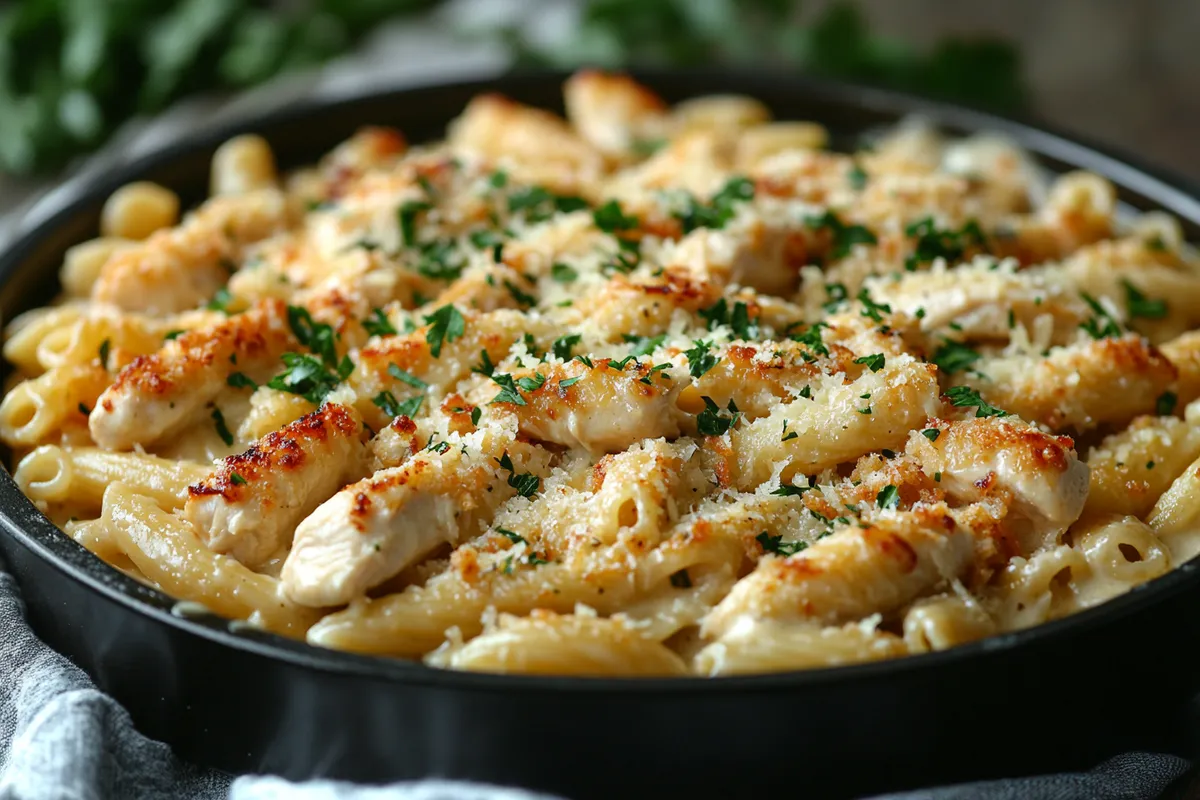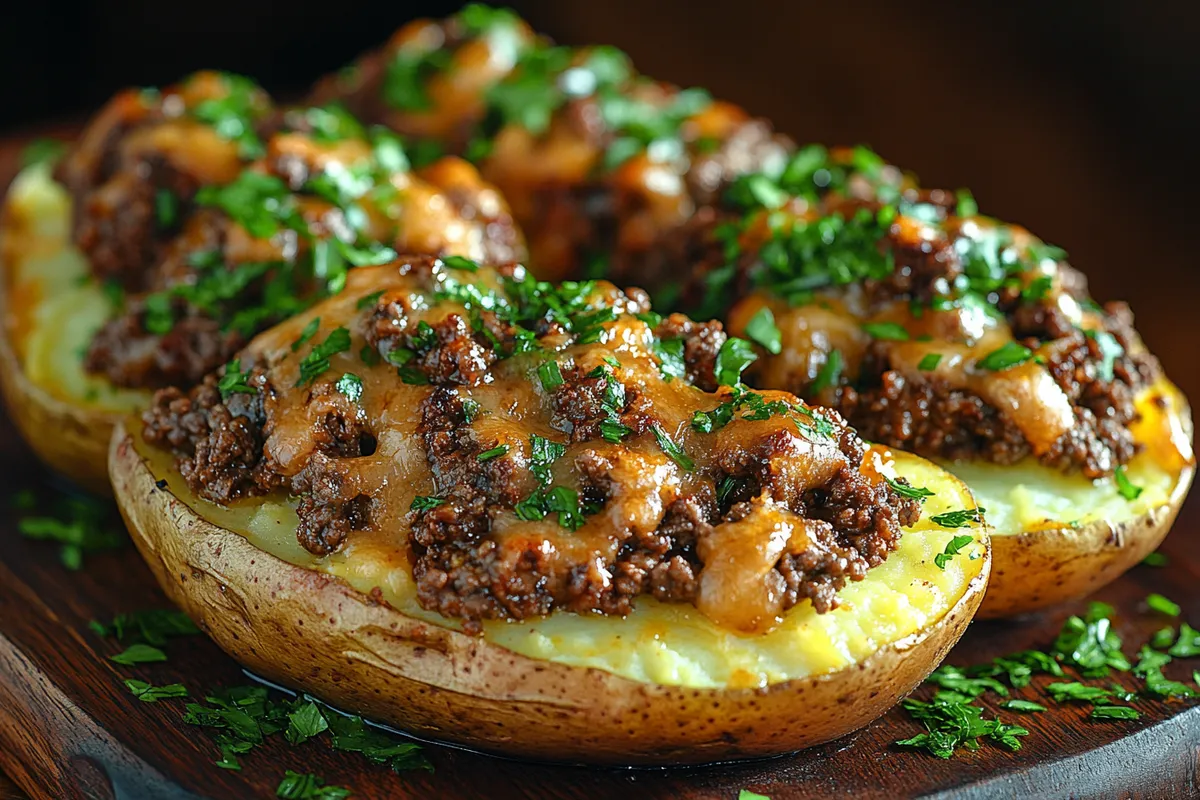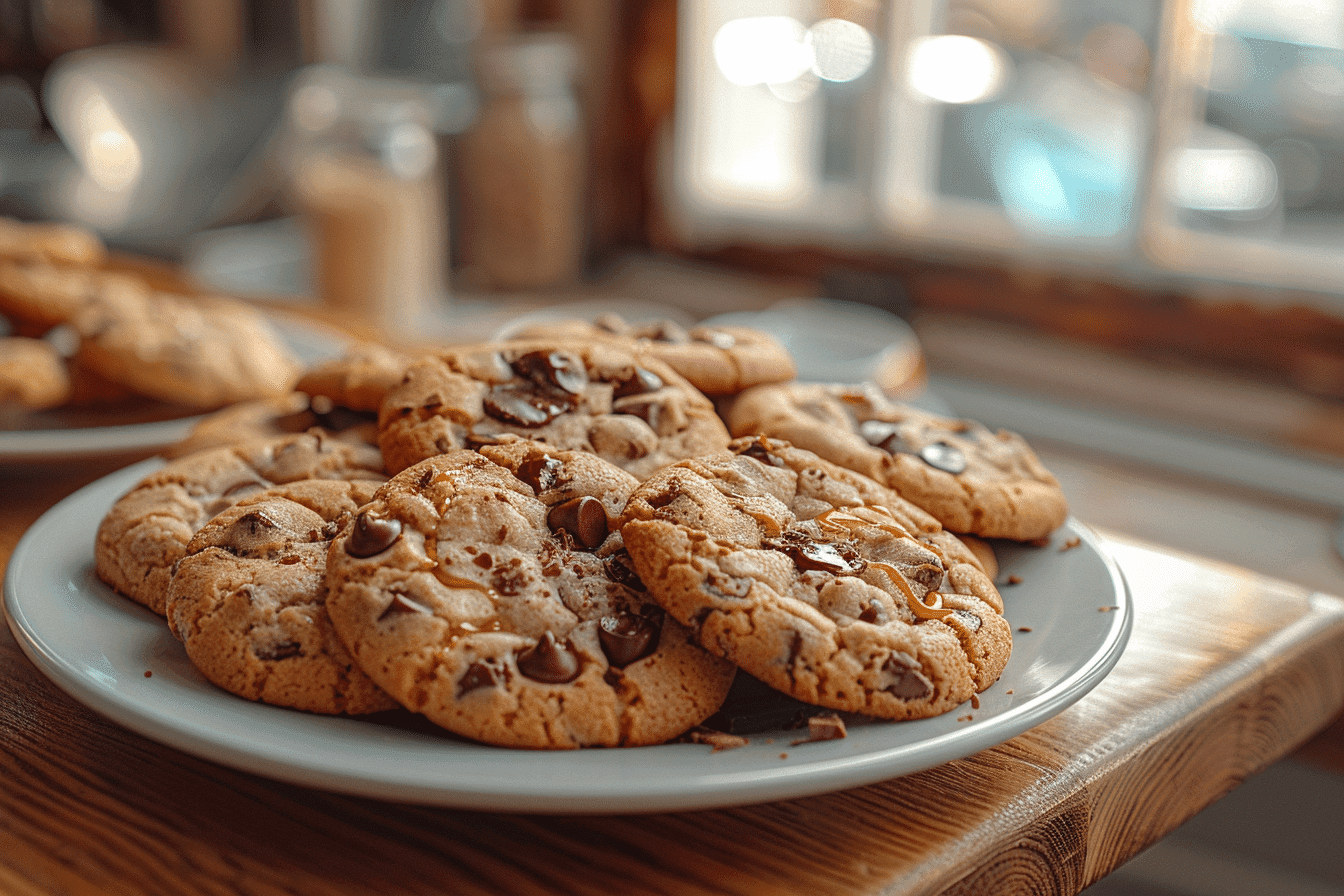Enjoy a classic dinner with our beef steak and potatoes recipe. It’s a timeless mix of juicy steaks and crispy potatoes. This meal is perfect for impressing your family and guests.
Our guide will help you pick the best beef and cook it to perfection. You’ll also learn how to make potatoes that are golden and delicious. This recipe is great for any occasion or when you just want a comforting meal.
We’ll share tips for cooking steaks and making the perfect potato side dish. You’ll also find ways to make this dish even better with creative variations and extra elements.
Key Takeaways:
- Learn how to choose the best cuts of beef for making juicy, flavorful steaks
- Master techniques for seasoning and cooking steaks to your desired level of doneness
- Discover the secrets to preparing crispy, golden potatoes that perfectly accompany your steaks
- Elevate your dish with a delectable garlic butter sauce and complementary vegetable sides
- Gain tips for adjusting portions and encouraging kids to explore new flavors in this satisfying meal
Choosing the Perfect Cut of Beef for Your Steak
Choosing the right cut of beef is key to a great steak and potatoes meal. Each cut has its own flavor, texture, and marbling. This can really change how your meal tastes. Knowing about beef grades and popular cuts helps you pick the best one for your dish.
Understanding Beef Grades and Marbling
The USDA grades beef based on quality and taste. There are three main grades:
- Prime: The top grade, with lots of marbling for tender and juicy meat.
- Choice: High quality, but with less marbling than Prime. It still tastes great and is tender.
- Select: Leaner, with little marbling. This means the steaks might be less tender and flavorful.
Marbling is the fat in the meat, seen as white flecks. Steaks with more marbling are tender, juicy, and taste better. This is because the fat melts while cooking, making the meat even more delicious.
Top Cuts for Steak: Ribeye, Sirloin, and Tenderloin
For the best steak, three cuts stand out:
- Ribeye: It has a rich flavor and lots of marbling. This makes it tender and juicy, perfect for grilling or pan-searing.
- Sirloin: Leaner but still full of flavor, sirloin is tender and satisfying. It’s great for those who want a tasty steak without too much fat.
- Tenderloin: The most tender cut, tenderloin is soft and has a mild flavor. Its texture is unmatched, making it a favorite for many.
| Cut | Flavor | Tenderness | Marbling |
|---|---|---|---|
| Ribeye | Rich, beefy | Tender | High |
| Sirloin | Bold, beefy | Moderately tender | Moderate |
| Tenderloin | Mild | Exceptionally tender | Low to moderate |
Choosing the right steak cut is a matter of personal preference and cooking method. Experiment with different cuts to discover your favorite and elevate your steak and potatoes game.
By picking high-quality beef with the right marbling, you can make a memorable steak and potatoes meal. Opt for cuts like ribeye, sirloin, or tenderloin to impress your taste buds and dinner guests.
Preparing Your Steak for Cooking
Before you start cooking your steak, make sure it’s ready. Steak preparation includes a few key steps. These steps can greatly improve the taste and texture of your meal.
Bringing Steak to Room Temperature
Letting your steak come to room temperature is crucial. This step helps the steak cook evenly. If you cook a cold steak, the outside might burn before the inside is cooked right.
By letting your steak warm up, the heat cooks it more evenly. This results in a juicy inside and a nice brown outside. This simple step can greatly improve your steak.
Seasoning Techniques for Maximum Flavor
Seasoning your steak is also key to great flavor. While some say a good steak only needs salt and pepper, trying different seasonings can elevate it.
Here are some seasoning ideas:
- Classic salt and pepper: Use kosher salt and black pepper on both sides. This lets the steak’s natural flavor shine.
- Dry rubs: Mix herbs and spices like garlic powder and thyme. Rub it on the steak for extra flavor.
- Herb butter: Mix softened butter with herbs like rosemary. Place it on the steak before serving for extra taste.
- Marinades: Marinades can add unique flavors to steaks. Try different oils and acids with seasonings to find what works best.
When seasoning, aim for a balance. You want to enhance the steak’s flavor without overpowering it. Try different methods to find what you like best.
Beef Steak and Potatoes Recipe: A Classic Combination
The classic steak and potatoes combo has been a favorite in American food for many years. It pairs the rich taste of a juicy steak with the crispy texture of potatoes. This makes for a meal that always impresses and satisfies.
Steak and potatoes are great together because they balance each other. The beef’s richness meets the potatoes’ starchiness, creating a perfect mix. You can grill, pan-sear, or broil the steak and mash, bake, or roast the potatoes to your liking.
A well-cooked steak and perfectly prepared potatoes have the power to transform any meal into a special occasion.
This recipe is loved for its flexibility. You can make it healthier by choosing leaner cuts of beef. Try different potatoes like sweet potatoes or fingerlings for more flavor and nutrition. Add herbs and spices to give it a unique taste.
- Choose leaner cuts of beef, such as sirloin or tenderloin, for a healthier option
- Experiment with different potato varieties, like sweet potatoes or fingerlings, for added nutrition and flavor
- Incorporate herbs and spices to create unique flavor profiles, such as rosemary-garlic or cajun-spiced
The secret to a great steak and potatoes dish is using high-quality ingredients and paying attention to detail. Choose the best cuts of beef and fresh potatoes for a memorable meal.
| Cut of Beef | Cooking Method | Potato Preparation |
|---|---|---|
| Ribeye | Grilling | Baked |
| Sirloin | Pan-Searing | Mashed |
| Tenderloin | Broiling | Roasted |
In the next sections, we’ll explore how to make the perfect steak and potatoes. We’ll cover choosing the right beef, cooking it to perfection, and picking the best potatoes. We’ll also show you how to add a flavorful sauce to elevate your dish. Get ready to create a classic steak and potatoes experience that will delight your taste buds.
Mastering the Art of Cooking Steak
Cooking the perfect steak is a skill every home chef wants to master. You can choose between grilling for a smoky flavor or pan-searing for quick results. A few key techniques can help you get the perfect doneness and a tender steak.
Grilling vs. Pan-Searing: Pros and Cons
Grilling and pan-searing are two top methods for cooking steak. Grilling gives a smoky taste and nice grill marks, loved by outdoor cooks. But, it needs more prep and can be weather-sensitive. Pan-searing is quicker and lets you control the heat, making a crispy crust.
| Method | Pros | Cons |
|---|---|---|
| Grilling | Smoky flavor, attractive grill marks | Requires more preparation, affected by weather |
| Pan-Searing | Quick and convenient, excellent heat control | Lacks smoky flavor |
Achieving the Perfect Doneness
Getting the right doneness is key when cooking steak. Whether you like it rare, medium, or well-done, here are some tips:
- Use a meat thermometer to check the steak’s internal temperature.
- Learn the finger test to feel the doneness.
- Look for color and texture changes to judge doneness.
A perfectly cooked steak should have a nice brown crust on the outside while remaining juicy and tender on the inside.
Letting Your Steak Rest
Letting your steak rest after cooking is crucial. It lets the juices spread evenly, making the steak tender and flavorful. Rest your steak for at least 5 minutes before slicing and serving.
By mastering these techniques, you can improve your steak cooking. This will impress your friends and family with top-notch results.
Crafting the Ideal Potato Side Dish
Creating the perfect potato side dishes for your beef steak is endless. You can choose from crispy roasted potatoes, creamy mashed potatoes, or flavorful potato wedges. Each method gives a unique taste and texture. The key is to pick the right potato and master the cooking techniques.
For crispy potatoes with a fluffy inside, try roasting. Cut potatoes into even pieces, toss with olive oil, and season with salt, pepper, and herbs like rosemary or thyme. Spread them on a baking sheet and roast until golden and crispy on the outside, yet tender inside.
The secret to perfectly crispy roasted potatoes is preheating the baking sheet. Place the empty sheet in the oven while it heats up. Then, arrange the seasoned potatoes on the hot sheet. This step helps them crisp up right away.
Mashed potatoes are a classic choice for a creamy side dish. Start by boiling peeled and quartered potatoes until tender. Drain and mash with butter, milk, and seasonings like garlic or chives. To avoid a gluey texture, don’t overwork the potatoes.
Seasoned potatoes, like garlic parmesan wedges or herb-roasted fingerlings, add a flavorful twist. Try different seasonings and herbs to match your steak. Some great combinations include:
- Garlic, parmesan, and parsley
- Paprika, cumin, and chili powder for a spicy kick
- Lemon zest, dill, and black pepper for a bright flavor
| Potato Type | Best Preparation Methods |
|---|---|
| Russet Potatoes | Baked, mashed, french fries |
| Red Potatoes | Roasted, boiled, potato salads |
| Yukon Gold Potatoes | Mashed, roasted, gratins |
| Fingerling Potatoes | Roasted, boiled, sautéed |
When making your potato side dish, aim to enhance your steak’s flavors. Whether you like crispy, creamy, or seasoned potatoes, the right techniques and creativity can make it perfect.
Elevating Your Steak with Garlic Butter Sauce
Take your beef steak and potatoes recipe to the next level with garlic butter sauce. This sauce is simple yet flavorful. It enhances the rich taste of the meat, making your meal special.
The creamy, garlicky sauce is perfect with your steak. It turns your dish into a gourmet delight.
Ingredients and Preparation
To make this tasty garlic butter sauce, you need a few quality ingredients:
- Unsalted butter
- Fresh garlic cloves, minced
- Fresh parsley, finely chopped
- Salt and freshly ground black pepper to taste
Start by melting the butter in a small saucepan over low heat. Add the minced garlic and sauté for 1-2 minutes until fragrant. Be careful not to burn the garlic.
Remove the pan from the heat. Stir in the chopped parsley, salt, and pepper. Your garlic butter sauce is now ready to drizzle over your steak.
Drizzling Techniques for Even Distribution
To coat your steak evenly with the garlic butter sauce, follow these steps:
- Using a spoon, drizzle the sauce over the steak, starting from the center and working your way outwards.
- For extra flavor, use a basting brush to spread the sauce over the entire steak. This ensures every bite is full of flavor.
- You can also slice the steak before drizzling the sauce. This lets the sauce seep into the meat for more flavor.
You can also use the garlic butter sauce to baste the meat during cooking. This keeps the steak moist and adds a rich, buttery flavor.
| Steak Cut | Cooking Method | Garlic Butter Sauce Pairing |
|---|---|---|
| Ribeye | Grilling | Drizzle over finished steak |
| Sirloin | Pan-searing | Baste during cooking |
| Tenderloin | Oven-roasting | Drizzle over sliced steak |
Adding garlic butter sauce to your beef steak and potatoes recipe makes it restaurant-quality. The sauce complements the steak’s savory flavors, creating a memorable meal. Your family and friends will love it.
Pairing Your Steak and Potatoes with Complementary Vegetables
Pairing your steak and potatoes with the right vegetables is key to a great meal. The right sides can add fresh flavors, textures, and nutrients. Let’s look at some tasty options that go well with this classic combo.
Roasted Asparagus or Green Beans
Roasted asparagus and green beans are great with steak and potatoes. They offer a crisp texture that balances the meal’s richness. Roasting brings out their sweetness, making them a perfect addition.
To roast them, toss with olive oil, salt, and pepper. Then, roast in a hot oven until tender-crisp. This simple method lets the veggies shine and complement your meal.
Sautéed Mushrooms and Onions
Sautéed mushrooms and onions are another great choice. Their earthy and sweet flavors enhance your dish’s taste.
Start by slicing mushrooms and onions. Heat a skillet with butter or olive oil. Cook the onions until soft, then add mushrooms. Sauté until they’re tender. Season with salt, pepper, and herbs like thyme or rosemary for extra flavor.
| Vegetable | Preparation Method | Flavors and Textures |
|---|---|---|
| Asparagus | Roasted | Crisp, tender, slightly sweet |
| Green Beans | Roasted | Tender-crisp, caramelized edges |
| Mushrooms | Sautéed | Earthy, umami, tender |
| Onions | Sautéed | Sweet, caramelized, aromatic |
Adding these vegetables to your steak and potatoes makes your meal more appealing. They bring a mix of flavors and textures that will make you want more. Try different combinations to find your favorite.
Steak Cooking Techniques for Different Cuts
Choosing the right cooking technique can make a big difference in steak. Each cut of beef needs a specific method to bring out its best flavors and textures. Learning these techniques is key for any home chef wanting to make a great meal.
The ribeye is a favorite for steak lovers. It’s known for its rich flavor and tender texture. Grilling is the best way to cook a ribeye. It sears the outside quickly while keeping the inside juicy and flavorful. Aim for a medium-rare to medium doneness to get the most out of it.
The key to a perfectly grilled ribeye is to let the steak rest for a few minutes before slicing and serving, allowing the juices to redistribute throughout the meat.
If you prefer a leaner steak, try the sirloin. Pan-searing is perfect for sirloin steaks. It creates a crispy crust while keeping the inside tender and juicy. To pan-sear a sirloin, heat a heavy-duty skillet over high heat and add a small amount of oil or butter. Cook the steak for 2-3 minutes per side, or until it reaches your desired level of doneness.
Thicker cuts like the filet mignon need a mix of techniques. Start by pan-searing to get a flavorful crust. Then, finish cooking in the oven. This method ensures the steak is cooked evenly, resulting in a tender and juicy center.
| Cut of Beef | Best Cooking Technique | Doneness |
|---|---|---|
| Ribeye | Grilling | Medium-rare to medium |
| Sirloin | Pan-searing | Medium-rare to medium |
| Filet Mignon | Pan-searing and oven-finishing | Medium-rare |
When cooking steak, think about the cut’s thickness and marbling. Thicker cuts need longer cooking times and might benefit from oven-finishing. Well-marbled cuts like ribeye can handle high-heat methods like grilling.
By mastering these techniques and understanding how they work for different cuts, you can make restaurant-quality steaks at home. Try different methods and find the perfect combination for your taste.
Oven Baked Potatoes: A Hands-Off Approach
Oven baked potatoes are a simple and easy side dish for your beef steak. This method ensures consistent results. It lets you focus on other meal aspects while the potatoes cook perfectly.
Preparing Potatoes for Baking
To start, wash the potatoes well to remove dirt. Then, dry them completely with a towel or paper towels. Next, pierce the skin of each potato several times with a fork. This lets steam out and prevents the potatoes from bursting.
For extra flavor and a crispy skin, rub each potato with olive oil and sprinkle with salt. This step boosts the potatoes’ natural taste and adds a satisfying crunch.
Determining Cooking Time Based on Size
The cooking time for oven baked potatoes depends on their size. Here are some guidelines for cooking at 400°F (200°C):
- Small potatoes (4-6 ounces): 45-50 minutes
- Medium potatoes (6-8 ounces): 50-60 minutes
- Large potatoes (8-12 ounces): 60-75 minutes
To check if the potatoes are done, insert a fork into the thickest part. If it goes in easily, they’re ready. For a crisper skin, broil them for 2-3 minutes after baking.
Mastering oven baked potatoes gives you a hands-off cooking experience. It results in delicious, fluffy potatoes every time. This technique is a great match for your classic beef steak and potatoes recipe.
Experimenting with Different Meat Marinades
Trying out different meat marinades can make your steak and potatoes dish even better. Marinades add flavor and make the steak tender. You can mix and match ingredients to create many tasty marinades.
When making your own marinades, think about acids, oils, and seasonings. Acids like lemon juice or vinegar make the meat tender. Oils spread the flavors and prevent sticking. Seasonings add unique tastes.
The beauty of marinades lies in their versatility. You can create classic combinations like garlic, rosemary, and red wine, or venture into more exotic territory with Asian-inspired blends featuring soy sauce, ginger, and lemongrass.
Here are some tips for marinating your steak:
- Marinate for at least 30 minutes but no more than 8 hours to avoid mushiness.
- Marinate in the fridge for safety.
- Use a non-reactive container to avoid flavor contamination.
- Pat dry the steak before cooking for better searing.
Here are some marinade ideas to get you started:
| Marinade Name | Ingredients |
|---|---|
| Classic Steakhouse | Worcestershire sauce, Dijon mustard, garlic, thyme, black pepper |
| Chili Lime | Lime juice, chili powder, cumin, garlic, cilantro, olive oil |
| Korean BBQ | Soy sauce, brown sugar, sesame oil, garlic, ginger, gochujang paste |
| Balsamic Herb | Balsamic vinegar, olive oil, rosemary, thyme, garlic, honey |
Remember, the fun is in experimenting with marinades. Trust your taste buds and try new things. With a bit of creativity, you’ll find many delicious marinades to enhance your steak and potatoes.
Tips for Making Steak and Potatoes a Family Favorite
It can be tough to make a tasty beef steak and potatoes meal for the whole family. This is especially true when you have picky eaters and different appetites. But, with a few easy tips, you can make this classic dish a hit with everyone.
Adjusting Portion Sizes for Different Appetites
One important thing is to make sure everyone gets a portion that fits their hunger. Adults might want a big piece of steak, but kids might find it too much. Here are some tips to help:
- Cut the steak into smaller pieces for kids, making it easier for them to manage and enjoy.
- Serve smaller portions of potatoes to kids, and allow them to request more if they’re still hungry.
- Offer a variety of toppings and condiments, such as shredded cheese, sour cream, or herbs, allowing each family member to customize their meal to their liking.
Encouraging Children to Try New Flavors
Getting kids to try new foods can be hard, but it’s key for them to enjoy a wide range of foods. Here are some ways to make your steak and potatoes meal exciting for kids:
- Involve children in the cooking process, allowing them to help season the steak or mash the potatoes. This hands-on experience can make them more invested in the meal and eager to try the fruits of their labor.
- Present the dish in a fun and appealing way, such as cutting the steak into shapes or arranging the potatoes into a smiley face. A visually engaging plate can make the meal more enticing to young diners.
- Offer praise and positive reinforcement when children try new flavors, even if they don’t immediately love them. Encouraging an adventurous spirit in the kitchen can help expand their palates over time.
By adjusting portion sizes and encouraging children to explore new flavors, you can turn your beef steak and potatoes recipe into a favorite family meal. It will be a hit with everyone at the table.
Conclusion
This beef steak and potatoes recipe is a classic that everyone loves. Choose a high-quality cut like ribeye or tenderloin. Then, cook the steak right to get a delicious main dish.
Pair the steak with crispy oven-baked potatoes for an even better meal. This makes the dish stand out.
Try different marinades and seasonings to make the flavors your own. Experimenting with new tastes is fun. Adding veggies like roasted asparagus or sautéed mushrooms makes the meal complete and healthy.
With a bit of practice, this recipe will be a family favorite. It’s great for any occasion, from special dinners to cozy nights in. So, get ready to grill or sauté and enjoy a top-notch meal at home.
FAQ
What is the best cut of beef for steak?
The top cuts for steak are ribeye, sirloin, and tenderloin. Ribeye is famous for its rich taste and marbling. Sirloin balances tenderness with flavor. Tenderloin is the tenderest but has a milder taste.
How do I prepare my steak before cooking?
First, let your steak come to room temperature for even cooking. Then, season it well with salt, pepper, or your favorite blend. This boosts the beef’s natural flavors.
What’s the difference between grilling and pan-searing steak?
Grilling steak gives it a smoky taste and nice grill marks. Pan-searing, in a hot skillet, creates a crispy crust. Both ways can make your steak delicious.
How do I know when my steak is done?
The steak’s doneness depends on what you like. Use a meat thermometer for medium-rare (135°F) or medium (145°F). Color and firmness also help you judge.
What are some popular potato side dishes for steak?
Great potato sides for steak are crispy roasted, creamy mashed, and hearty wedges. Try different seasonings and herbs to match your steak’s flavor.
Can I make a sauce to go with my steak and potatoes?
Yes! A garlic butter sauce is a great addition. Mix melted butter with minced garlic and drizzle it over your steak for extra richness.
What other vegetables pair well with steak and potatoes?
Roasted asparagus, green beans, sautéed mushrooms, and caramelized onions are great with steak and potatoes. They add color, texture, and flavor.
How can I adapt this recipe for a family with different tastes?
For a family-friendly version, adjust portion sizes and let kids help with cooking. Praise them for trying new foods.
What are some tips for making oven baked potatoes?
For perfect baked potatoes, wash and dry them, then pierce the skin. Rub with oil and seasonings. Bake at 400°F for 45-60 minutes until crispy outside and fluffy inside.
Can I marinate my steak for extra flavor?
Absolutely! Try different marinades for new flavors. Use classic garlic and herbs or bold spices and citrus. Marinate for at least 30 minutes, or up to 8 hours for deeper flavor.

























